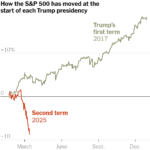This article first appeared in The Teaching Professor on August 8, 2022 © Magna Publications. All rights reserved. Try a FREE three-week trial of The Teaching Professor!
I probably shouldn’t admit this, but when I was just beginning my teaching career, I had one clear goal on the first day of class: scare the living crap out of my students.
I’m exaggerating, but only a little. And while I’m tempted to say, “I’m not even sure where this came from!” that’s not entirely true: it came from my sense that as a grad student and a young professor not much older than my students, I needed to establish my authority. It came from a fear that maybe I wasn’t as smart as I thought I was and that I needed to hide this behind a veil of superiority. It came from the intimidation I myself had felt semester after semester, year after year, as I sat in class facing professors I assumed to be infinitely wise and infinitely powerful.
It seems strange to even talk about this in the “post”-COVID era: among the many lessons the pandemic has taught us about impactful teaching, “be kind to your students” is near the top. But to be honest, even after these past few years, “being kind” still isn’t really my main goal when I first enter the classroom. Rather, what I want to do on that first day is have my students fall into intrigue.
Consider Bryan Kelvey, a meteorology professor at Carroll Community College. He begins class by passing out weather maps, putting the students in groups, and asking them to predict the weather.
Or think about the late Thomas Knorr, a physics professor at Wheeling Jesuit: he began his intro class by handing students a long, narrow piece of wood and asking them to develop a unit of measurement that they would then have to use all term (Hanstedt, 2018).
In my own introductory humanities classes, I’m prone to projecting a painting by J. M. W. Turner—one of his more abstract ones—onto the screen, and asking students whether it’s a celebration of technology or a reaction against it—and how do you know? Other times, I’ll hand them a short poem and ask them to identify the single most important word in it—the word upon which the whole poem revolves—and explain their reasoning.
I do this even before I tell them my name. I don’t want them to be distracted by who I am, by my title, by power dynamics that can’t be avoided. What I want is for them to love what I love: the way perspective can shift depending on what we choose to emphasize, the formal elements we’re drawn to or away from, the way words have both an intellectual logic and an emotional one, the way the images we carry in our heads as a consequence of those words can affect how we perceive the people and the world around us.
I also want students to be confused—and to enjoy that confusion. I want them to understand that confusion is a necessary step, less toward an absolute answer than toward a next wonderful, engaging, beautiful confusion that is thrilling beyond belief.
Years ago, I was giving a talk at Montgomery College in Maryland and made the point that when teaching gen ed classes, we need to do a better job of connecting our courses to life outside the academy. Afterward, a mathematics professor approached me. “I understand what you’re saying,” she said. “But I love my field not because it’s connected to life but because it has these big, beautiful problems. They don’t really have a purpose, but I love them.”
Kathy Takayama (2014) puts it this way: as scholars, we know that our best work comes out of moments of confusion where something doesn’t quite make sense, spaces of paradox or contradiction. These spaces contain questions that we wish to answer—no, actually, that we feel compelled to answer. Takayama continues, noting that by and large our students also occupy a liminal space, transitioning between stages, whether that’s from high school to career or one career phase to another. She encourages us to allow our students to dwell in this liminality, to embrace it, learning to explore the robust and playful opportunity it presents to ask questions and engage in problem solving.
All this, it seems to me, offers one answer to that perennial question—one that’s only become more frequent since the pandemic: How do we engage our students?
We engage them by using the first day, the first hour, the first minute of class to introduce them to beautiful problems—the kinds of problems that intrigue us. The kinds of paradoxes that drew us into our fields. The kinds of questions that, as we walk to work in the morning, cause us to nearly cross into traffic, we’re just that distracted. The kinds of confusions and challenges that we discuss over coffee with colleagues at conferences, that we laugh about in the taxi ride back to the hotel after that keynote that wasn’t particularly interesting. We begin not with the syllabus, not with the table of contents, not with the attendance policy, not with lame jokes but with the real questions that delight us in our own work.
I know, I know, there are a whole slew of objections we can raise against this approach:
I can’t do this in a big lecture.
Maybe you can do that in your field, but in my field these questions are so advanced that we can’t do them on the first day.
But we have a legal obligation to cover the syllabus.
I am happy to discuss in more detail—email me!—but my short replies to these concerns are as follows:
Yes, you can: that’s what clickers and Poll Everywhere are for.
Yes, many of us research and write on questions so advanced or abstract that covering them on the first day is impossible. If that’s the case for you, think back to the first time you fell in love with your field: What big questions engaged you early on? Bring those into play, perhaps in simplified form. And if even those are too advanced, focus less on the complexity of the question than on recreating for students the intellectual and emotional intrigue you feel doing the work in your field. What sort of puzzle or riddle or challenge might achieve this?
Cover the syllabus later. And if you’re looking for some good ideas on how to move beyond legal obligation into meaningful understanding of the syllabus, peruse the tips offered here.
Maybe I misspoke earlier when I said that being kind wasn’t necessarily my main goal on the first day of class. Because in a culture that increasingly treats learning and knowledge—and a university degree—as transactional; in a nation where curiosity is under threat and too many are willing to take as stone truth the ramblings of idiots on social media; in such a world, perhaps drawing our students into intrigue is the kindest gift we can offer them.
Paul Hanstedt, PhD, is the founding director of the Harte Center for Teaching and Learning at Washington and Lee University and the author of General Education Essentials: A Guide for College Faculty (about to come out in a second edition) and Creating Wicked Students: Designing Courses for a Complex World.
References
Hanstedt, Paul. 2018. Creating Wicked Students. Sterling, VA: Stylus Publishing.
Takayama, Kathy. 2014. “Cultivating Learning Cultures.” AAEEBL Conference. Boston, MA: 2014.
The post On the First Day of Class, Begin with Intrigue appeared first on Faculty Focus | Higher Ed Teaching & Learning.
I probably shouldn’t admit this, but when I was just beginning my teaching career, I had one clear goal on the first day of class: scare the living crap out of my students.
The post On the First Day of Class, Begin with Intrigue appeared first on Faculty Focus | Higher Ed Teaching & Learning. Effective Teaching Strategies, Faculty Development, class discussion, first day of class activities, teaching strategies Faculty Focus | Higher Ed Teaching & Learning





